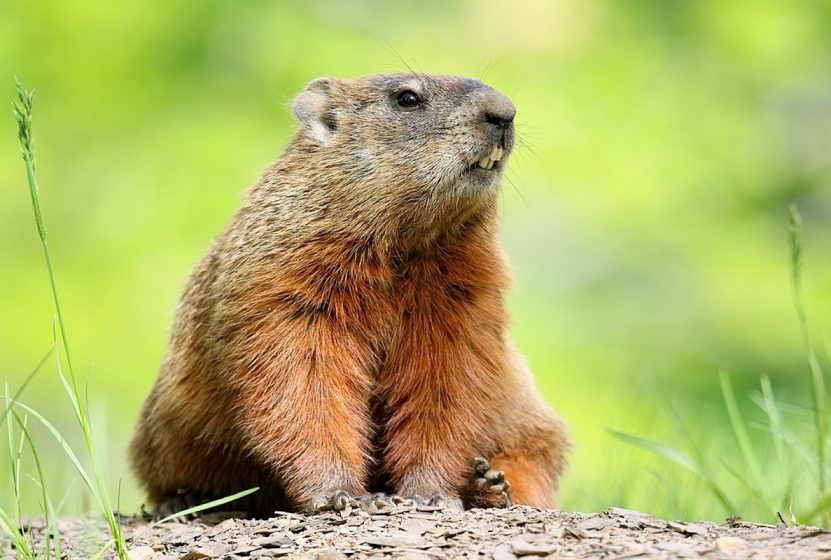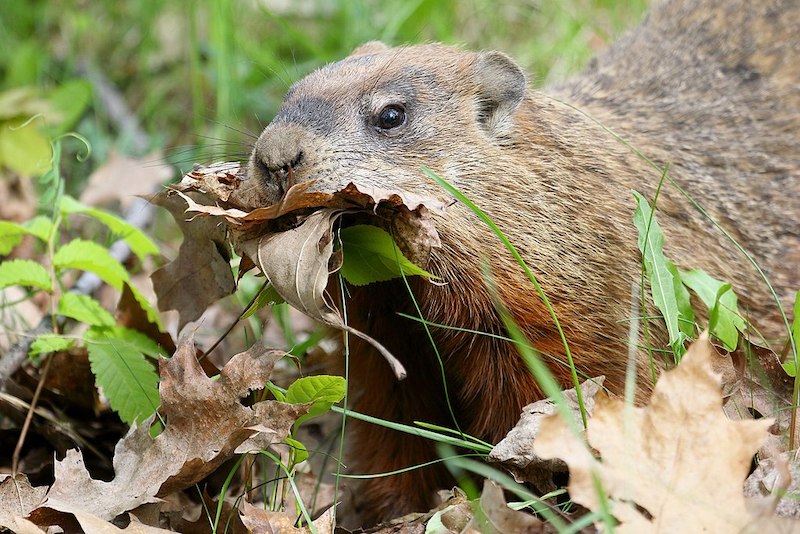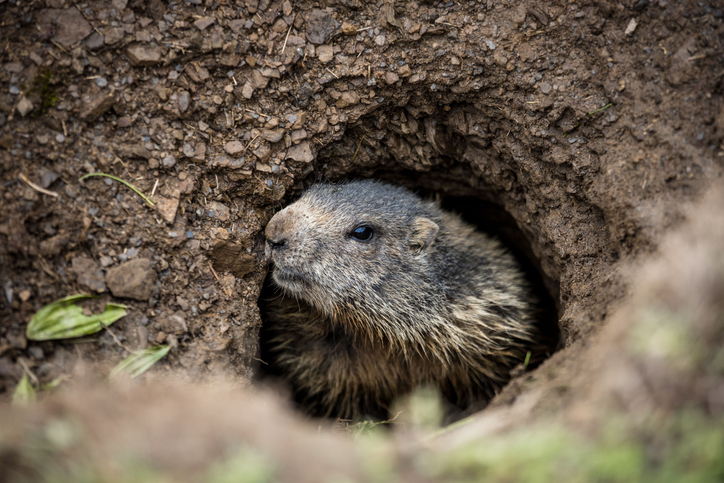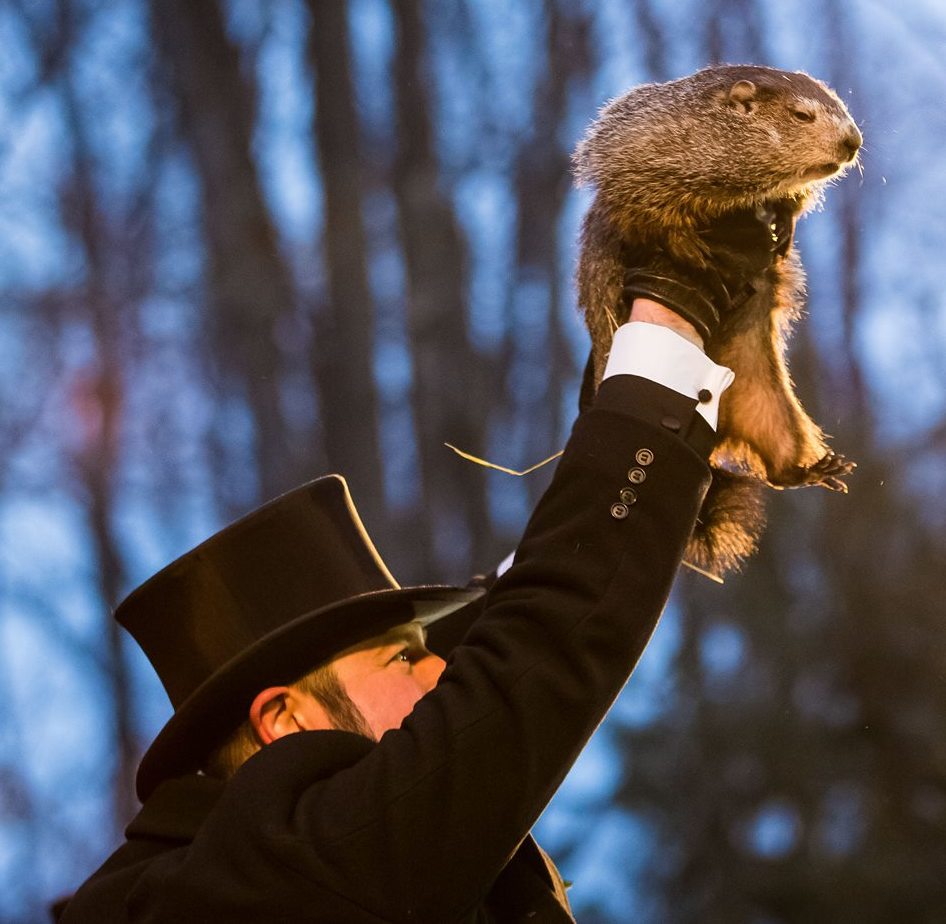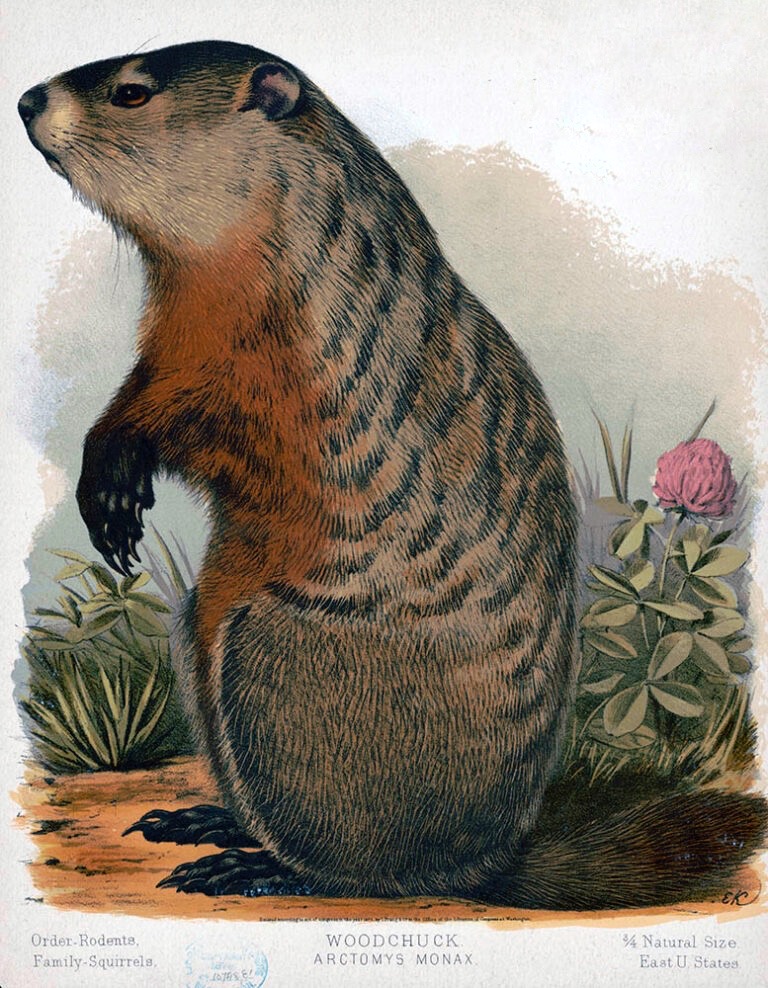The Groundhog (Marmota monax) is a member of the squirrel family that lives throughout the eastern United States, Canada, and Alaska. This rotund rodent also goes by the name whistle pig, land beaver, monax and woodchuck. The name woodchuck doesn’t describe the raucous behavior of throwing lumber around, but really a mispronunciation of the Native American word Wuchak which means “digger”.
Weighing up to 13 pounds, low-slung, and having long claws and stout legs, groundhogs are built to dig. Solitary, these herbivore excavators create spacious underground burrows just for themselves.
Summer burrows are usually dug in grassy areas at the edge of wooded areas. These subterranean squirrels keep a tidy home and will change out their nesting material on a regular basis.
When the mercury drops these chucks will prepare a new abode closer to the trees. Winter burrows are typically dug below the frost line and can be twenty feet in diameter with multiple entrances and exits to evade unwanted visitors such as bobcats, coyotes, and foxes.
From October till February, the groundhog hibernates, and much like bears they live off fat stores while their metabolic rates fall well below normal. Heart rates can go from 80 beats a minute down to 5 while they sleep away the coldest months.
Come February and the lengthening of the days male groundhogs make the rounds visiting the burrows of nearby females. This is just to say “hiya” until spring is in full swing and it’s time to make some little whistle pigs. Groundhog litters can be up to six young after a 32-day gestation period. After about three months the young head out to dig their own burrows where they live to be about six years in the wild.
Wood Chuck Weathermen?
Groundhog Day traces its roots back to Ye Olde Europe where the holiday of Candlemas was celebrated every February 2nd. Originally it was thought that if a hedgehog saw its shadow on a clear day it would portend more wintery weather.
German immigrants that settled in Pennsylvania brought this tradition with them, but since hedgehogs don’t live in North America, the gift of meteorological insight was bestowed upon the local Ground Hogs. As the tradition continued in the New World it eventually entered into American lore and was even cited in the Farmer’s Almanac.
Punxsutawney Pennsylvania became the North American epicenter of Ground Hog Day where the Punxsutawney Groundhog Club has kept the tradition alive since the 1880s. Every February 2nd the club meets at Punxsutawney Phil’s burrow on Gobbler’s Knob to see whether the sagacious squirrel sees his shadow or not.
If it is overcast and Phil sees no shadow then we can look forward to warmer days of early spring, if he sees his shadow it means winter will last another six weeks. Either way, some schnapps is probably called for.
So how accurate is Punxsutawney Phil?
A comparison of the Ground Hog Club’s century worth of records and weather data over the same period puts Phil’s accuracy rate at 39% which isn’t too bad for a fat squirrel who probably rather be left alone so he can sleep in.



